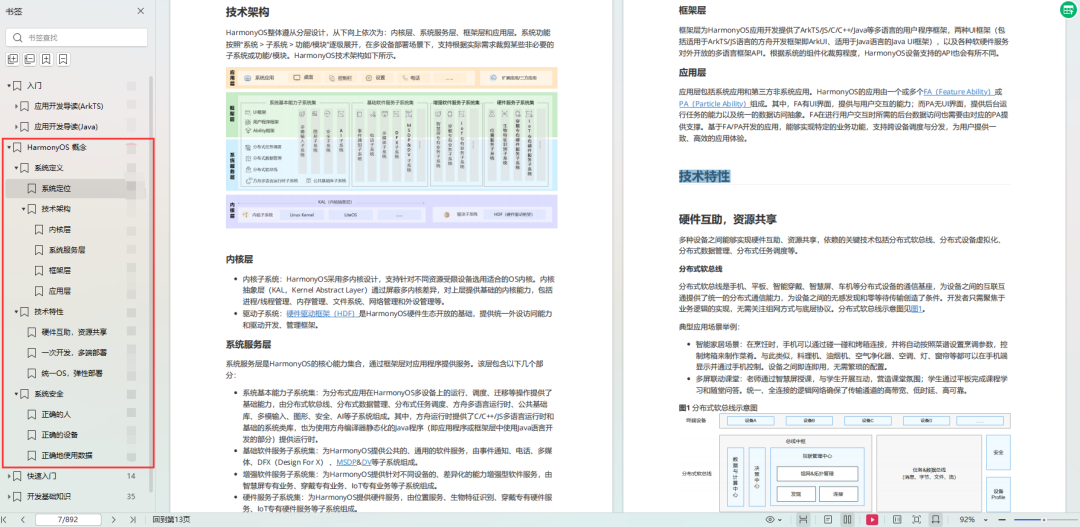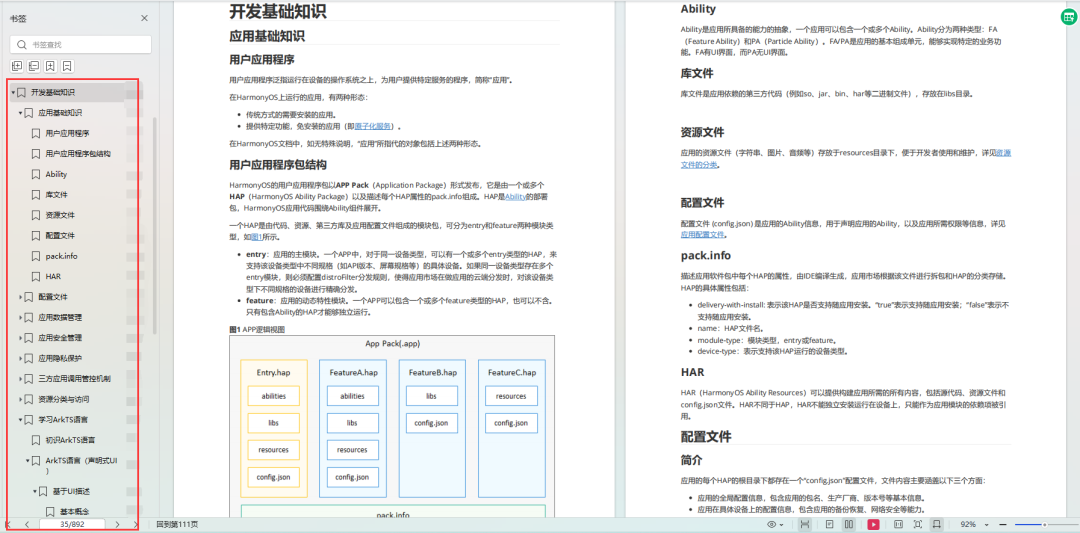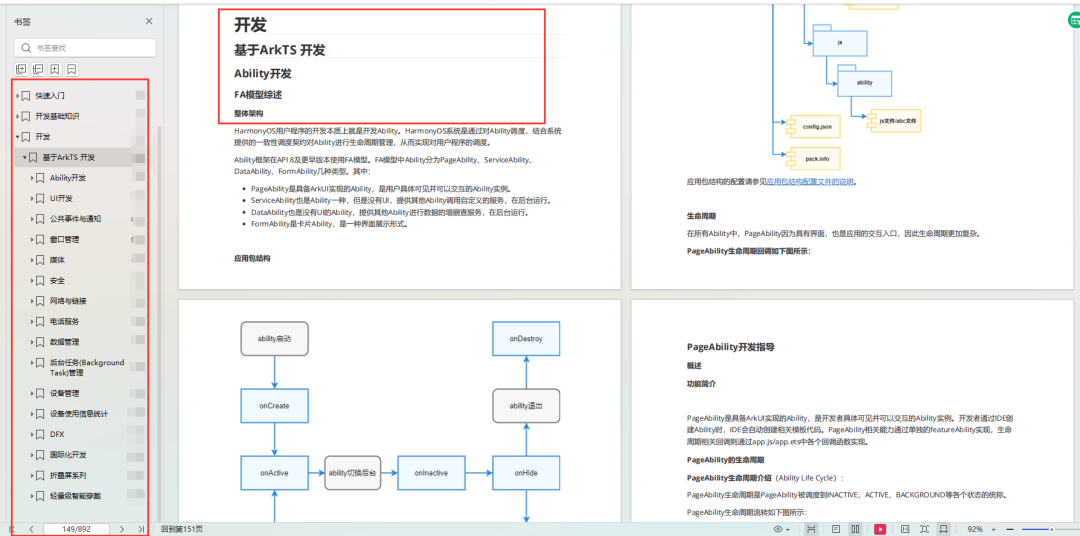

【鸿蒙】OpenHarmony使用strace
电子说
描述
简介
Strace 是一个强大的进程行为跟踪工具,当怀疑某个进程运行异常的时候,比如死锁,CPU 高或者莫名卡顿等,可以使用 strace 查看该进程发起的系统调用和接收到的信号,从而确定问题所在。当然也可以利用 strace 去学习了解进程的运行流程,调用库以及参数和统计。那么如何在 OpenHarmony 里编译使用此工具就是我们这篇文章要分享的话题。
编译构建
下载:从https://github.com/strace 下载最新源码
//下载地址 wget https://github.com/strace/strace/releases/download/v6.6/strace-6.6.tar.xz
安装编译环境
//编译工具链(32位) sudo apt-get install gcc-arm-linux-gnueabi //ohos的源码下载后,其实也有对应的工具链,位置如下 prebuilts/gcc/linux-x86/arm(32位)/gcc-linaro-7.5.0-arm-linux-gnueabi/bin
编译
//设置环境变量 export CC=arm-linux-gnueabi-gcc export CFLAGS=-static export CPPFLAGS=-static export LDFLAGS='-static -pthread' //配置 ./configure CC=arm-linux-gnueabi-gcc CXX=arm-linux-gnueabi-cpp LD=arm-linux-gnueabi-ld RANLIB=arm-linux-gnueabi-ranlib --host=arm-linux --target=arm-linux --enable-mpers=no //编译 make //strip arm-linux-gnueabi-strip strace
运行测试
//传到板子上
hdc_std.exe shell mount -o rw,remount /
hdc_std.exe file send strace /system/bin
hdc_std.exe shell chmod +x /system/bin/strace
//运行测试
hdc_std.exe shell
# strace --help
Usage: strace [-ACdffhiqqrtttTvVwxxyyzZ] [-I N] [-b execve] [-e EXPR]...
[-a COLUMN] [-o FILE] [-s STRSIZE] [-X FORMAT] [-P PATH]...
[-p PID]... [--seccomp-bpf]
{ -p PID | [-DDD] [-E VAR=VAL]... [-u USERNAME] PROG [ARGS] }
or: strace -c[dfwzZ] [-I N] [-b execve] [-e EXPR]... [-O OVERHEAD]
[-S SORTBY] [-P PATH]... [-p PID]... [--seccomp-bpf]
{ -p PID | [-DDD] [-E VAR=VAL]... [-u USERNAME] PROG [ARGS] }
General:
-e EXPR a qualifying expression: OPTION=[!]all or OPTION=[!]VAL1[,VAL2]...
options: trace, abbrev, verbose, raw, signal, read, write, fault,
inject, status, kvm
Startup:
-E VAR=VAL, --env=VAR=VAL
put VAR=VAL in the environment for command
-E VAR, --env=VAR
remove VAR from the environment for command
-p PID, --attach=PID
trace process with process id PID, may be repeated
-u USERNAME, --user=USERNAME
run command as USERNAME handling setuid and/or setgid
Tracing:
-b execve, --detach-on=execve
detach on execve syscall
-D run tracer process as a grandchild, not as a parent
-DD run tracer process in a separate process group
-DDD run tracer process in a separate session
-f follow forks
-ff follow forks with output into separate files
-I INTERRUPTIBLE
1: no signals are blocked
2: fatal signals are blocked while decoding syscall (default)
3: fatal signals are always blocked (default if '-o FILE PROG')
4: fatal signals and SIGTSTP (^Z) are always blocked
(useful to make 'strace -o FILE PROG' not stop on ^Z)
Filtering:
-e trace=[!]{[?]SYSCALL[@64|@32|@x32]|[?]/REGEX|GROUP|all|none},
--trace=[!]{[?]SYSCALL[@64|@32|@x32]|[?]/REGEX|GROUP|all|none}
trace only specified syscalls.
groups: %creds, %desc, %file, %fstat, %fstatfs %ipc, %lstat,
%memory, %net, %process, %pure, %signal, %stat, %%stat,
%statfs, %%statfs
-e signal=SET, --signal=SET
trace only the specified set of signals
print only the signals from SET
-e status=SET, --status=SET
print only system calls with the return statuses in SET
statuses: successful, failed, unfinished, unavailable, detached
-P PATH, --trace-path=PATH
trace accesses to PATH
-z print only syscalls that returned without an error code
-Z print only syscalls that returned with an error code
Output format:
-a COLUMN, --columns=COLUMN
alignment COLUMN for printing syscall results (default 40)
-e abbrev=SET, --abbrev=SET
abbreviate output for the syscalls in SET
-e verbose=SET, --verbose=SET
dereference structures for the syscall in SET
-e raw=SET, --raw=SET
print undecoded arguments for the syscalls in SET
-e read=SET, --read=SET
dump the data read from the file descriptors in SET
-e write=SET, --write=SET
dump the data written to the file descriptors in SET
-e kvm=vcpu, --kvm=vcpu
print exit reason of kvm vcpu
-i, --instruction-pointer
print instruction pointer at time of syscall
-o FILE, --output=FILE
send trace output to FILE instead of stderr
-A, --output-append-mode
open the file provided in the -o option in append mode
-q suppress messages about attaching, detaching, etc.
-qq suppress messages about process exit status as well.
-r print relative timestamp
-s STRSIZE, --string-limit=STRSIZE
limit length of print strings to STRSIZE chars (default 32)
-t print absolute timestamp
-tt print absolute timestamp with usecs
-ttt print absolute UNIX time with usecs
-T print time spent in each syscall
-v, --no-abbrev
verbose mode: print entities unabbreviated
-x print non-ascii strings in hex
-xx print all strings in hex
-X FORMAT set the FORMAT for printing of named constants and flags
formats: raw, abbrev, verbose
-y print paths associated with file descriptor arguments
-yy print protocol specific information associated with socket
file descriptors
Statistics:
-c, --summary-only
count time, calls, and errors for each syscall and report
summary
-C, --summary like -c, but also print the regular output
-O OVERHEAD set overhead for tracing syscalls to OVERHEAD usecs
-S SORTBY, --summary-sort-by=SORTBY
sort syscall counts by: time, calls, errors, name, nothing
(default time)
-w summarise syscall latency (default is system time)
Tampering:
-e inject=SET[:error=ERRNO|:retval=VALUE][:signal=SIG][:syscall=SYSCALL]
[:delay_enter=DELAY][:delay_exit=DELAY][:when=WHEN],
--inject=SET[:error=ERRNO|:retval=VALUE][:signal=SIG][:syscall=SYSCALL]
[:delay_enter=DELAY][:delay_exit=DELAY][:when=WHEN]
perform syscall tampering for the syscalls in SET
delay: milliseconds or NUMBER{s|ms|us|ns}
when: FIRST, FIRST+, or FIRST+STEP
-e fault=SET[:error=ERRNO][:when=WHEN], --fault=SET[:error=ERRNO][:when=WHEN]
synonym for -e inject with default ERRNO set to ENOSYS.
Miscellaneous:
-d, --debug enable debug output to stderr
-h, --help print help message
--seccomp-bpf enable seccomp-bpf filtering
-V, --version print version
小结
简单说说 strace 的典型场景:
进程统计:针对某个运行高 cpu 消耗的进程,进行监控统计,什么操作耗时多?后台在做什么事?统计出来高消耗的系统操作
# top Tasks: 243 total, 2 running, 237 sleeping, 0 stopped, 4 zombie Mem: 1992724K total, 1501188K used, 491536K free, 1830912 buffers Swap: 1048572K total, 0 used, 1048572K free, 683260K cached 400%cpu 125%user 1%nice 70%sys 202%idle 0%iow 0%irq 2%sirq 0%host PID USER PR NI VIRT RES SHR S[%CPU] %MEM TIME+ ARGS 555 graphics -2 -8 150M 62M 45M S 72.4 3.1 895:19.80 render_service 539 composer_ho+ -2 -8 17M 4.9M 3.8M S 23.2 0.2 282:37.59 composer_host 9 composer_host -8 1 247 logd 20 0 16M 4.9M 2.3M S 12.2 0.2 167:45.62 hilogd 14516 root 0 -20 0 0 0 I 3.3 0.0 0:07.05 [kworker/u9:1-kbase_pm_poweroff_wait] 14587 root 25 5 14M 3.0M 2.6M R 2.9 0.1 0:00.12 top 178 root RT 0 0 0 0 S 2.3 0.0 36:26.03 [sugov:0] # strace -cp 555 strace: Process 555 attached strace: Process 555 detached % time seconds usecs/call calls errors syscall ------ ----------- ----------- --------- --------- ---------------- 22.34 0.456649 22 20705 clock_gettime64 20.30 0.415126 66 6201 ioctl 16.03 0.327786 45 7236 writev 10.87 0.222298 31 7006 close 7.24 0.148065 18 7855 gettid 5.90 0.120715 58 2058 168 futex 3.65 0.074596 22 3296 dup 2.76 0.056384 68 825 munmap 2.27 0.046345 55 828 write 1.93 0.039523 27 1442 poll 1.64 0.033546 40 824 mmap2 1.49 0.030400 36 828 fcntl64 1.40 0.028689 34 824 prctl 0.80 0.016341 36 447 206 read 0.50 0.010236 24 412 _llseek 0.46 0.009408 45 207 madvise 0.36 0.007341 35 206 epoll_pwait 0.05 0.001017 1017 1 restart_syscall ------ ----------- ----------- --------- --------- ---------------- 100.00 2.044465 61201 374 total
跟进分析:通过「T」选项可以获取操作实际消耗的时间,通过「e」选项可以跟踪某个操作
strace -T -e clock_gettime64 -p 555
strace: Process 555 attached
clock_gettime64(CLOCK_MONOTONIC, {tv_sec=89616, tv_nsec=627412894}) = 0 < 0.000037 >
clock_gettime64(CLOCK_MONOTONIC, {tv_sec=89616, tv_nsec=627777769}) = 0 < 0.000149 >
clock_gettime64(CLOCK_REALTIME, {tv_sec=1702433139, tv_nsec=94341493}) = 0 < 0.000047 >
clock_gettime64(CLOCK_MONOTONIC, {tv_sec=89616, tv_nsec=628287311}) = 0 < 0.000042 >
clock_gettime64(CLOCK_MONOTONIC, {tv_sec=89616, tv_nsec=628442478}) = 0 < 0.000038 >
clock_gettime64(CLOCK_MONOTONIC, {tv_sec=89616, tv_nsec=628586853}) = 0 < 0.000039 >
clock_gettime64(CLOCK_MONOTONIC, {tv_sec=89616, tv_nsec=628774978}) = 0 < 0.000037 >
clock_gettime64(CLOCK_MONOTONIC, {tv_sec=89616, tv_nsec=629033978}) = 0 < 0.000039 >
clock_gettime64(CLOCK_MONOTONIC, {tv_sec=89616, tv_nsec=629318936}) = 0 < 0.000041 >
clock_gettime64(CLOCK_MONOTONIC, {tv_sec=89616, tv_nsec=629491020}) = 0 < 0.000039 >
这就是一个最简单的查看性能问题的流程,先统计,再看具体操作,然后查看代码,锁定问题。剩下的就是祝好运咯。当然如果发现输出比较少,还有个工具是 ltrace
为了能让大家更好的学习鸿蒙 (OpenHarmony) 开发技术,这边特意整理了《鸿蒙 (OpenHarmony)开发学习手册》,希望对大家有所帮助:
《鸿蒙(Harmony OS)开发学习手册》
入门必看:https://docs.qq.com/doc/DUk51cHZJaUpmSlhH
1.应用开发导读(ArKTS)
2.……

HarmonyOS概念:https://docs.qq.com/doc/DUk51cHZJaUpmSlhH
1.系统定义
2.技术框架
3.技术特性
4.系统安全

快速入门:https://docs.qq.com/doc/DUk51cHZJaUpmSlhH
1.基本概念
2.构建第一个ArkTS应用
3.……

开发基础知识:https://docs.qq.com/doc/DUk51cHZJaUpmSlhH
1.应用基础知识
2.配置文件
3.应用数据管理
4.应用安全管理
5.应用隐私保护
6.三方应用调用管控机制
7.资源分类与访问
8.学习ArkTS
9…

基于ArkTS 开发:https://docs.qq.com/doc/DUk51cHZJaUpmSlhH
1.Ability开发
2.UI开发
3.公共事件与通知
4.窗口管理
5.媒体
6.安全
7.网络与链接
8.电话服务
9.数据管理
10.后台任务(Background Task)管理
11.设备管理
12.设备使用信息统计
13.DFX
14.国际化开发
15.折叠屏系列
16………

审核编辑 黄宇
-
基于OPenHarmony的智慧牧场#鸿蒙韩 2022-09-23
-
自助Linux之问题诊断工具strace2012-02-21 0
-
基于 OpenHarmony,国内首个轻鸿蒙手表 OS 发行版出炉2021-11-16 0
-
Linux strace命令的用法2019-04-02 323
-
openharmony和鸿蒙区别2021-06-24 3634
-
openharmony和鸿蒙有什么关系2021-06-22 11046
-
openharmony 鸿蒙2021-06-21 1661
-
openharmony官网和鸿蒙2021-06-21 2216
-
openharmony和鸿蒙的关系2021-06-21 1963
-
华为openharmony鸿蒙 2.02021-06-21 1857
-
openharmony2.0大会 openharmony和鸿蒙的关系2021-06-22 2055
-
openharmony与鸿蒙区别2021-06-22 4901
-
openharmony与鸿蒙2.0的关系2021-06-23 1761
-
openharmony和鸿蒙的区别是什么2021-06-23 9365
-
鸿蒙openharmony成员2021-06-23 2544
全部0条评论

快来发表一下你的评论吧 !

